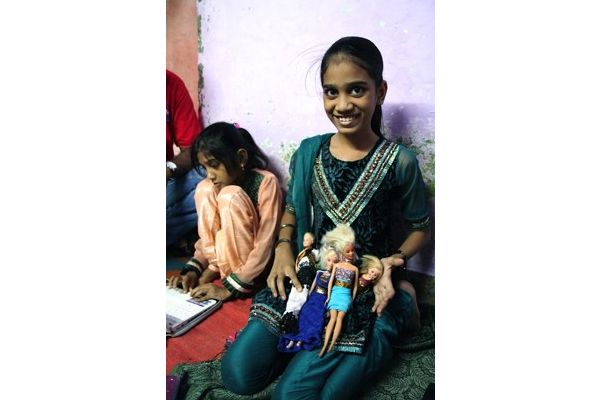In many parts of India, girls never learn to read or write. Forty percent (or two out of every five girls) do not go to school. Instead, they help with household chores, work in the fields, tend to the animals or walk several hours to collect water for drinking. Sometimes girls go to school but drop out because there are no toilets available; of the 700,000 schools in rural areas of India, only one in six has a toilet.
But now, all across India, efforts are being made to increase girls’ school attendance. Rusda Shaikh, a 10-year-old with a bright smile, studies the same subjects as her older brother — language arts, math, science, history and geography. Rusda, who lives in the city of Ahmedabad, plans to stay in school — there’s no doubt in her mind about that.
In several ways, Rusda is very much like some American girls. She enjoys playing with Barbie dolls (she has four), and she loves dancing (she has a dancer’s body, thin and graceful). Rusda spends a lot of time on the computer, doing her homework and also using a special program to draw and paint. She goes swimming at the local pool on weekends, and her favorite food is Domino’s pizza.
But Rusda’s everyday life is also quite different from that of many American children. She lives with her parents, brother and sister in a two-room apartment with a small kitchen and a main room where they all watch TV and sleep. They also eat there, sitting on the floor, as is the custom in India.
Rusda has enrolled in evening classes to study computers and English. As she recites her vocabulary words of the week (“immortal,” “pathetic” and “belly laugh”) her big, beautiful eyes get bigger. In her free time she likes to play cricket, a game somewhat like baseball. When she runs, there’s no stopping her.
In school, Rusda and her classmates study Mohandas Gandhi, the leader of the Indian independence movement, who supported the education of girls. They also learn about Indira Gandhi (no relation to Mohandas Gandhi), a woman who served four terms as prime minister, and Sonia Gandhi, her daughter-in-law, now president of the leading political party.
As more girls finish school and attend college, their future is changing. When Rusda grows up, she, like her brother, will have many choices. She’ll also have many more opportunities than girls used to have.
